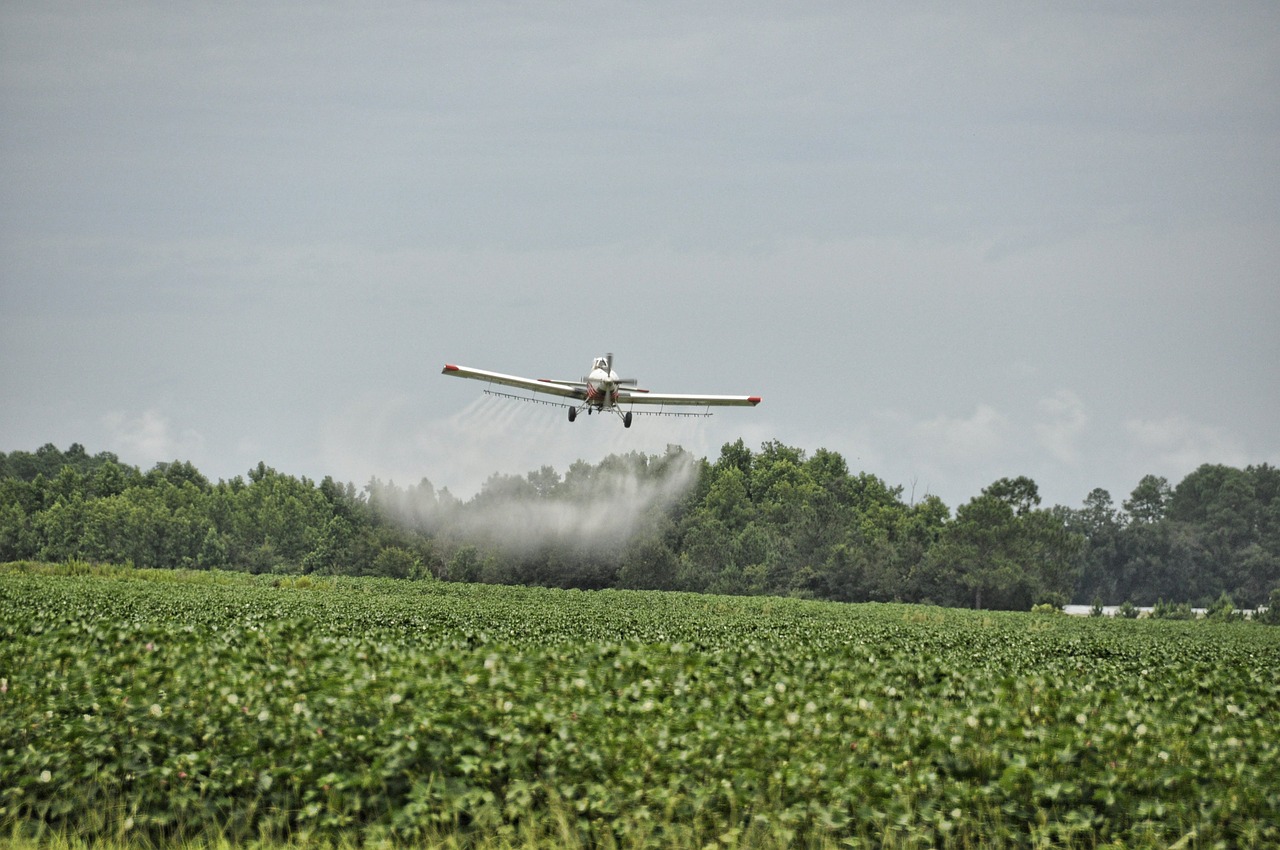The cotton convoy is rushing up and down the highway as Jerry Beck, a portly, white-bearded man in his 60s, steps into the Caprock Cafe, a country diner run by his wife. Despite below-freezing temperatures, he wears a short-sleeved shirt with a pocket that bears the imprint of a chewing tobacco can. He looks every bit the former sheriff that he is.
Beck periodically spits into a Styrofoam cup as he explains that Quitaque is under siege by crop dusters, pilots hired by farmers to spray pesticides on fields to kill weeds and prepare the cotton plants for harvest. Sometimes the pilots miss their marks and inadvertently deliver a cloud of poison to people, plants and animals.
Beck has firsthand experience with the “chemical drift” problem, as regulators call it. In May 2016, a duster spraying a field near Beck’s house sent an off-target blast of paraquat dichloride, a toxic pesticide, wafting over his home. The next day, he noticed that his vegetable garden and fruit trees were starting to show signs of being poisoned, which he blames on the paraquat, according to his complaint with the Texas Department of Agriculture (TDA). His biggest worry is that three of his grandkids were playing outside when the chemical drifted through his property.
“I remember thinking, ‘Boy, that ain’t good,’ because they were all exposed to it,” Beck said. In the following days, Beck’s granddaughters complained of headaches and difficulty breathing, problems that he attributes to the pesticide exposure.
The use of paraquat is tightly regulated by the Environmental Protection Agency (EPA) because of the chemical’s extreme toxicity. It can cause death in humans, and even limited exposure can be “corrosive to the skin and eyes,” according to a risk assessment conducted by the agency. A 2009 UCLA study found that people exposed to paraquat are three times more likely to develop Parkinson’s disease. The chemical has been banned by the European Union and China.
The label printed on containers of Gramoxone, a widely used pesticide whose active ingredient is paraquat, warns against breathing the chemical’s mist and says to seek medical attention if the poison comes into contact with skin or clothing.
Based on interviews with 11 people in Quitaque, it appears that the chemical drifted at least 5 miles. Its path started behind Beck’s house on the south side of town, cutting a swath through downtown and moving farther east, where it spread to more rural areas. In its path were trees, gardens, livestock, pets and people.
Kim Reiss, who runs a commercial organic garden in Quitaque, claims the pesticide made her nose bleed. “That was so weird. I never have a bloody nose,” she said. Over the next few days, the fruits and vegetables in her garden began to die. The leaves of the plants were pocked with what she described as “cigarette burns” that kept getting bigger. Reiss said she lost $8,000 worth of produce. That’s in addition to the adverse effects of being exposed to pesticides before the fall harvest each year, when farmers hire crop dusters to spray cotton fields. “Usually, while they’re defoliating [the cotton], I spend a good portion of that time being sick,” she said. “They call it allergies. I call it being defoliated. It’s a strange place to choose to live.”
About a month later, in late June, Quitaque farmer and rancher C.L. Hawkins was repairing a fence in one of his fields when he says the wind carried a wave of pesticide onto him. “I was working on a fence right across the road, and he was sprayin’. Boy, I just went ahead and got out of there,” said Hawkins, who complained to TDA.
Then, in September, Quitaque wheat farmer and cattle rancher Paul Teegardin reported to the agency that the pesticide drifted onto grass he uses to feed his beef cattle. Though it was the first time he had filed a formal complaint, Teegardin said his land has been under assault by crop dusters for at least two years.

